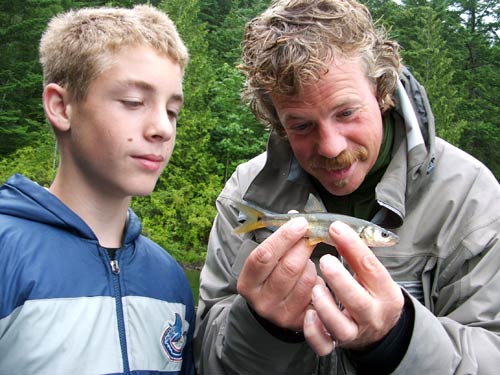Starting on Tuesday September 2nd, anglers should be aware of some changes in the Fraser River salmon fishing regulations (read the fishery notice). These changes include a bait ban, non-retention of coho and sockeye salmon. These implementations will take place until early October when Interior coho salmon run ends.
Until about two years ago, the only management measure used during the Interior coho salmon run-time in the Lower Fraser River is a total salmon fishing closure from in September and part of October, except limited openings on pink salmon during their run years since 2003. The SFACs (Sportfishing Advisory Committees) requested the option of limited fishing opportunities for chinook and chum salmon as a management measure during this period around two years ago and Fisheries and Oceans Canada has provided it. This is particularly good for two user groups. Recreational anglers who lack the mobility and do not wish to travel far can still enjoy a salmon fishery during this period. The opportunity also provides an alternative option for Fraser Valley guides and their clients in case conditions of nearby do not favour their trips.
A bait ban is in effect during this period due to the effectiveness of roe on coho salmon. Coho also have a tendency to swallow roe, which results in deep hooking and a possible increase of mortality rate. This would counter the effort in conserving the Interior coho salmon run.
Anglers are requested to use fishing methods that would specifically target chinook and chum salmon. We are requested, not limited, because coho salmon can be caught by all methods (barfishing, spincasting with lures). Although this is the case, what all should realize and should not ignore is the fact that the questioned method (bottom bouncing, or whatever you want to call it) has a higher tendency to foul hook fish. Foul hooked fish require longer fighting time, result in longer recovery time and possibly higher mortality rate.
The fortunate yet sad reality is that the protected populations make up an insignificant percentage of all the returning salmon during this management period, therefore the percentage of by-catch is in fact quite small. This does not suggest by-catch in the sportfishing sector is not a problem, because when a species is threatened, any mortality is a concern.
The point is, as an educated angler who is aware of the fragility of Interior coho salmon and late sockeye salmon runs, one should take these into consideration and practice fishing responsibly. Spincasting for coho salmon can actually be good in the tidal portion of the Fraser River around late September and early October, but many choose not to practice catching and releasing them because some of these fish being targeted are the ones that we are attempting to protect. Bait fishing for trout, char and steelhead is in fact not prohibited during this period, but one should not use it as a loop hole to target salmon with roe and claim to be fishing for trout, char and steelhead when being checked by conservation officers.
There are dedicated individuals on the SFACs who have worked hard to provide these additional salmon fishing opportunities for the angling community. It would be unfortunate if people choose to have these taken away by fishing however they prefer that may counter the conservation effort set out by Fisheries and Oceans Canada. Keep in mind that the goal here is to protect species, not to save fishing opportunities. The status of these species will indirectly impact your fishing opportunities. If their status eventually becomes endangered, then the only management measure would be no fishing for all species.

 Â
  Â
 